
Let’s accept this. As women, we may be turning to our trusted kurti – palazzo sets or old jeans and tees through most of the year, but when the festive season comes along and there’s an unmistakable feeling of joy and hope in the atmosphere, we do want to put on exquisite ethnic wear to match the mood. And, of course, there’s nothing better than a timeless saree any day. What’s more – and this is an accepted fact – every woman looks like a queen when she steps out in saree regalia.
Now that we are right in the middle of the official festive (and wedding) season of the year, we’ve done a roundup of some of our favourite girls showing us how to create a seamless blend of tradition and modernity in classic drapes.
First up, here are some quick saree facts worth thinking over:
- The history of the saree can be traced back to Indus Valley Civilization. That’s a cool 5000 years ago!
- Indian sarees have been hugely diversified according to the geography, availability of local materials for production, craftsmanship, and occasion.
- India boasts of a rich treasure trove of countless textiles and styles, each with its distinctive history and culture.
- According to the Development Commissioner – Handlooms website, there is a whopping 115 plus indigenous saree categories across India – from Jammu and Kashmir to Kerala, West Bengal to Gujarat.
- Machine-made sarees are quicker to manufacture, cheaper, and therefore, easier on the pocket for many. So, many traditional handloom and handcrafted weaves are unfortunately on their way out today.
- It is a pleasure to see many of our screen divas wearing the saree for red-carpet events, weddings, and festivals infusing loads of glamour in the garment.
- The saree has now been lovingly adopted by celebrities across the world – American influencers to Chinese singers have all worn it with panache.
Vidya Balan, the face of Silk Mark Organisation of India (by Central Silk Board), declares her love for traditional sarees loud and clear. She has spoken often about her deep fascination for Indian weaves, especially the silk saree. Here, she effortlessly raises the femininity bar with an exquisite red Benarasi (Banarasi) saree having an intricate gold thread pallu and border. The Benarasi saree, as the name suggests, originated from the famous city of Benaras (Varanasi) in Uttar Pradesh. Known for their intricate designs and luxurious texture, Benarasi sarees come in a range of striking colours and are made of silk threads with an abundance of gold and silver woven patterns, often inspired by Mughal motifs. There are lots of paisleys, floral and fauna designs along the border and grand pallu. A Benarasi saree is the effortless showstopper in any festive gathering. Traditional Bengali brides wear the Benarasi on their Big Day which often becomes a family heirloom.

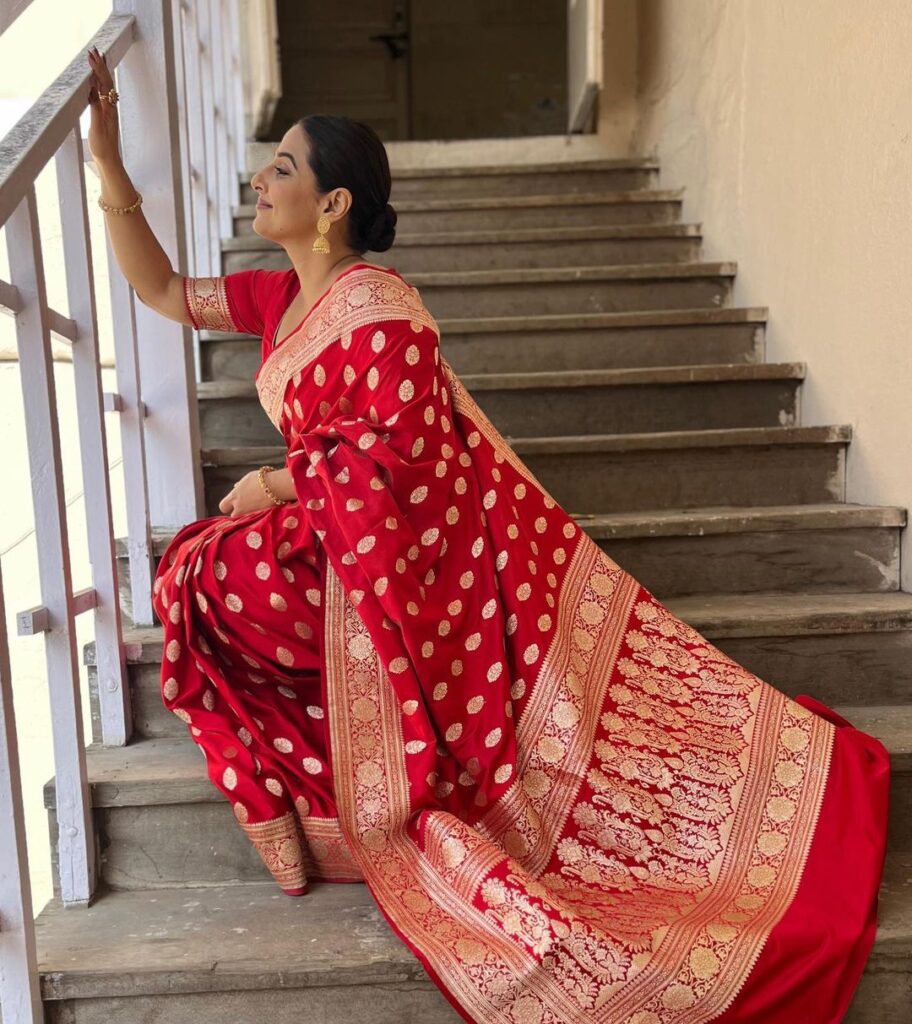
They say a Bengali girl and her saree collection are inseparable. Here, the very gorgeous Rani Mukherjee’s drape is an enthralling blend of traditional Pochampally border and pallu on a dark base with thin contrasting stripes. The saree’s vivid design balances traditional flair and fashion in one go. Don’t miss her fabulous temple jewellery doing full justice to the look. The Pochampally saree is crafted in silk with striking Ikat designs. It originated from Bhoodan Pochampally, Yadadri Bhuvanagiri district, now in the state of Telangana. The drapes have delightful geometric patterns in vibrant colours crafted in the “Paagadu Bandhu” (Ikat) style of dyeing
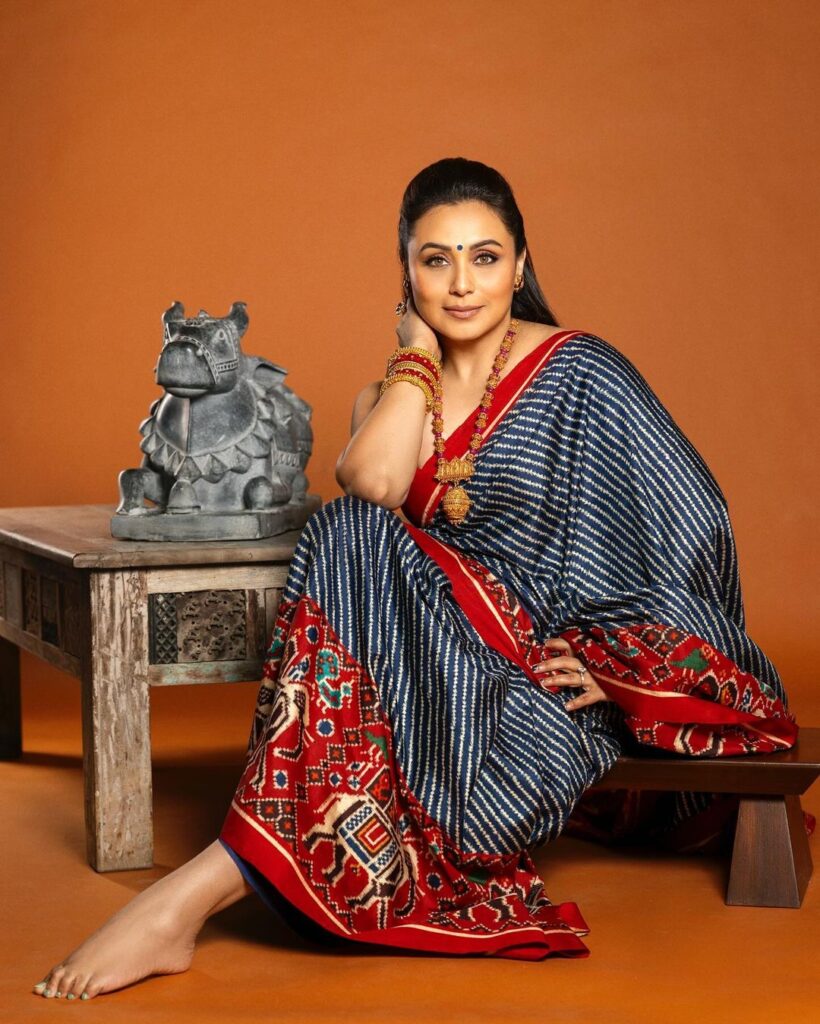
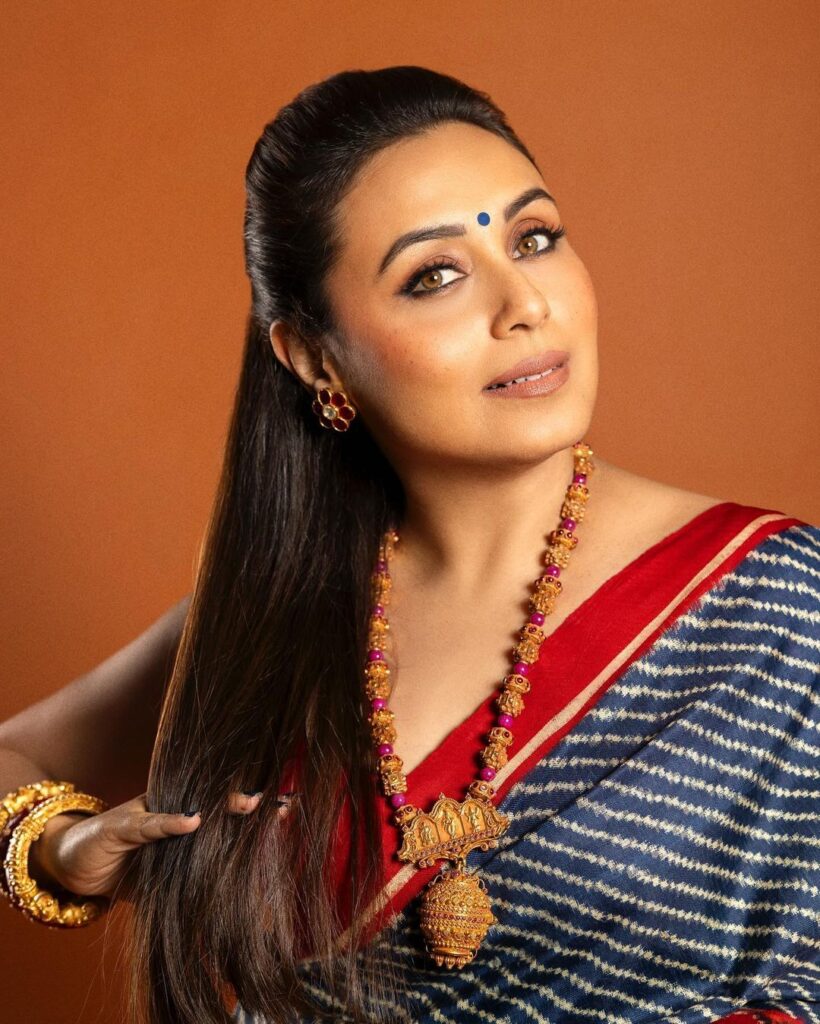
Doe-eyed Deepika looks bewitching with a capital B, oozing glamour in her dark-red Zardozi. A traditional Indian saree, the Zardozi is created with fine embroidery of metallic gold or silver threads and rich embellishments. Zardozi embroidery is truly a craftsman’s labour of love, involving meticulous attention to detail incorporating precious and semi-precious stones, pearls, and rich bead work into the design. One of the oldest forms of hand embroidery on a garment, the term Zardozi actually means “gold embroidery”. It is believed to have originated in Persia and travelled to Lucknow, the city of Nawabs, though there are contestants to the claim.
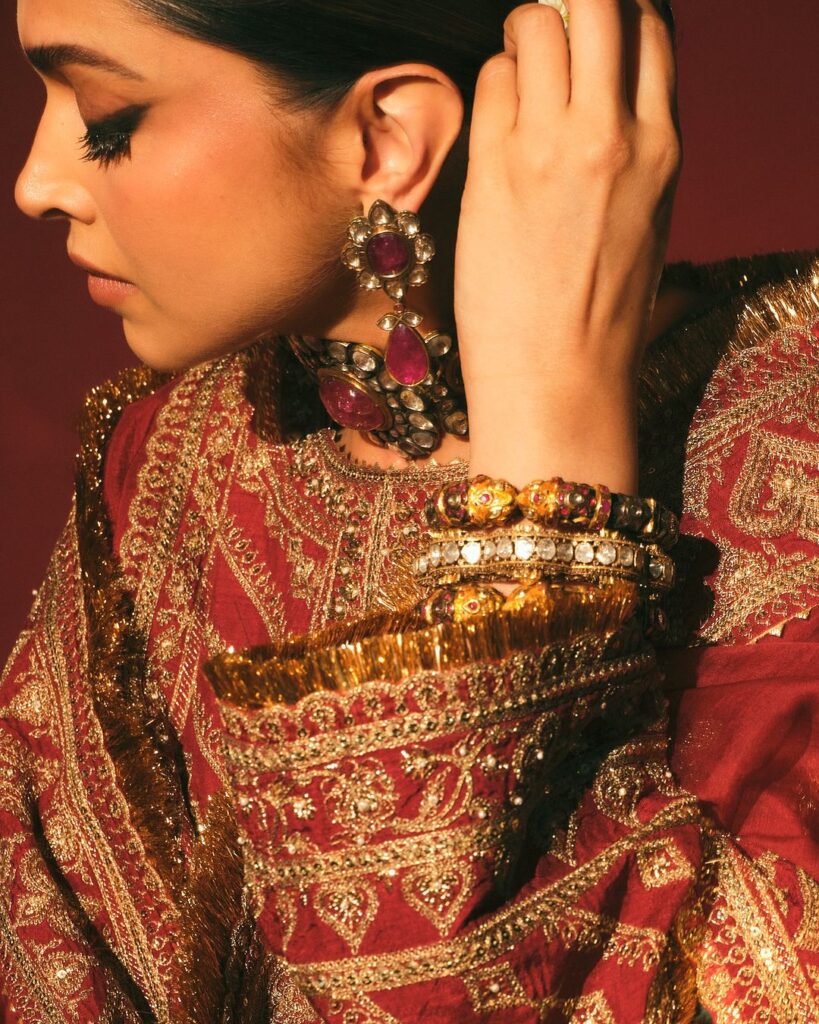

Red is the colour of womanhood. Red is Shakti. Nayanthara in her red Chanderi drape looks absolutely divine and leaves us swooning over her simple, elegant look. A traditional Koli weave, the Chanderi saree originated from Chanderi in Madhya Pradesh. Records say the rich weaving culture of Chanderi is ages old, having emerged between the 2nd – 7th centuries. A Chanderi saree is lightweight and dreamy crafted from a fine blend of pure silk, silk cotton, and Chanderi cotton. This handmade fabric is prized for its fairyland-like shimmer, lightness, and sheer. Traditional Chanderi sarees have motifs that range from singara booti (chestnut) and mirchi booti (chilli) to peacocks, flowers, and coins.
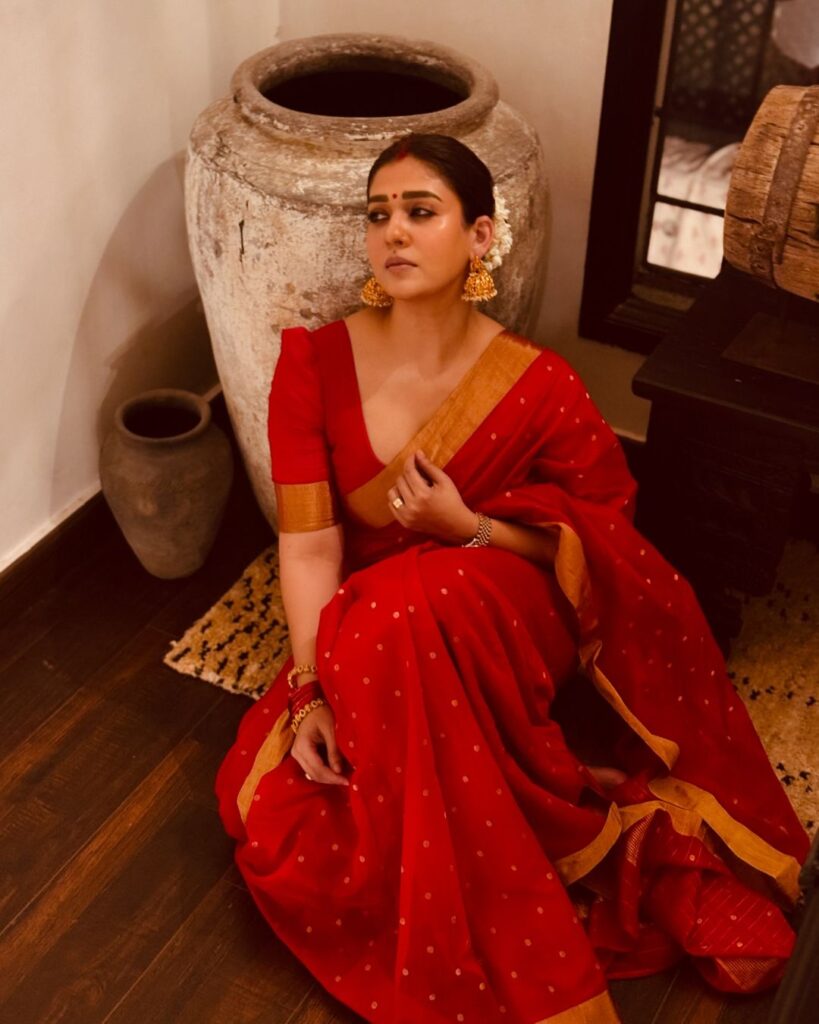
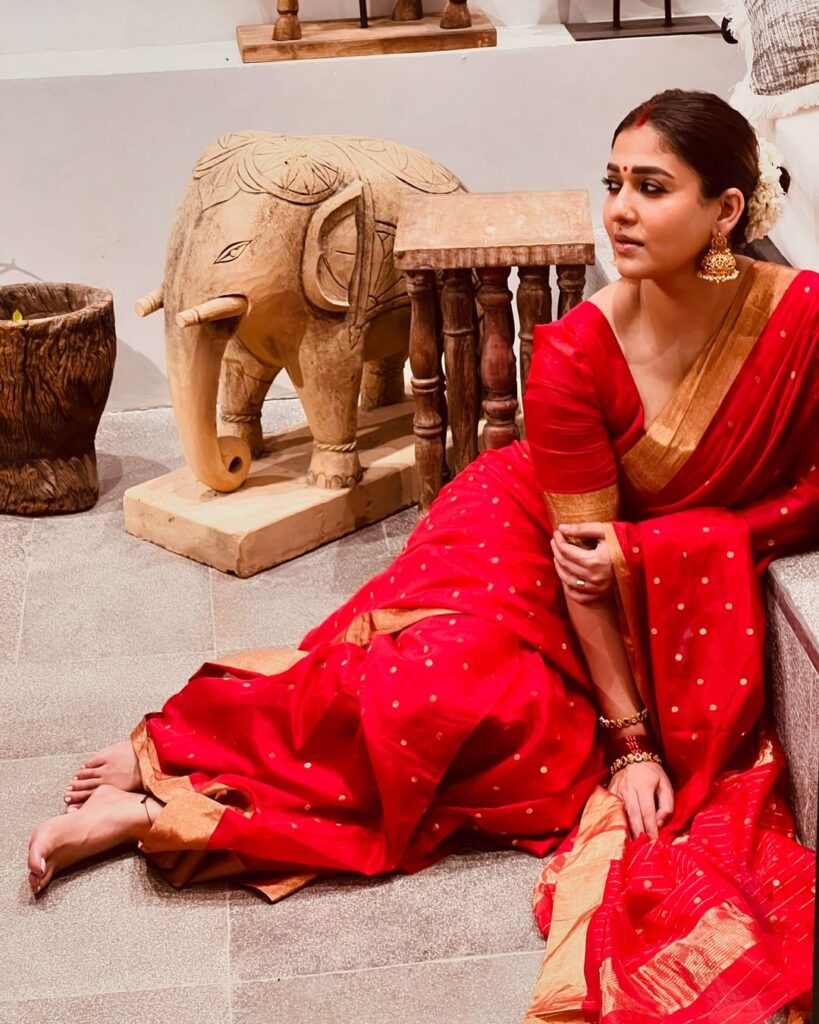
Bomkai comes to life in the fabulous red-green saree that Roja has draped. She has left her makeup to the barest minimum and let her drape do all the talking. The Bomkai saree has had a long and glorious journey as we can trace back its origin to the 8th century to the village of Bomkai in the Ganjam district of Odisha. Also known as the Sonepuri saree or Sambalpuri Bomkai Saree, the distinguishing feature of the drape is its contrasting border and intricate woven motifs of silk thread along the border and pallu. The Bomkai’s design is inspired by the rich mythology and folklore and legends of Odisha. The motifs are drawn hugely from Hindu culture and show traditional art and cultural elements that include flora and fauna, tribal art, interesting geometrical designs and mythological characters.
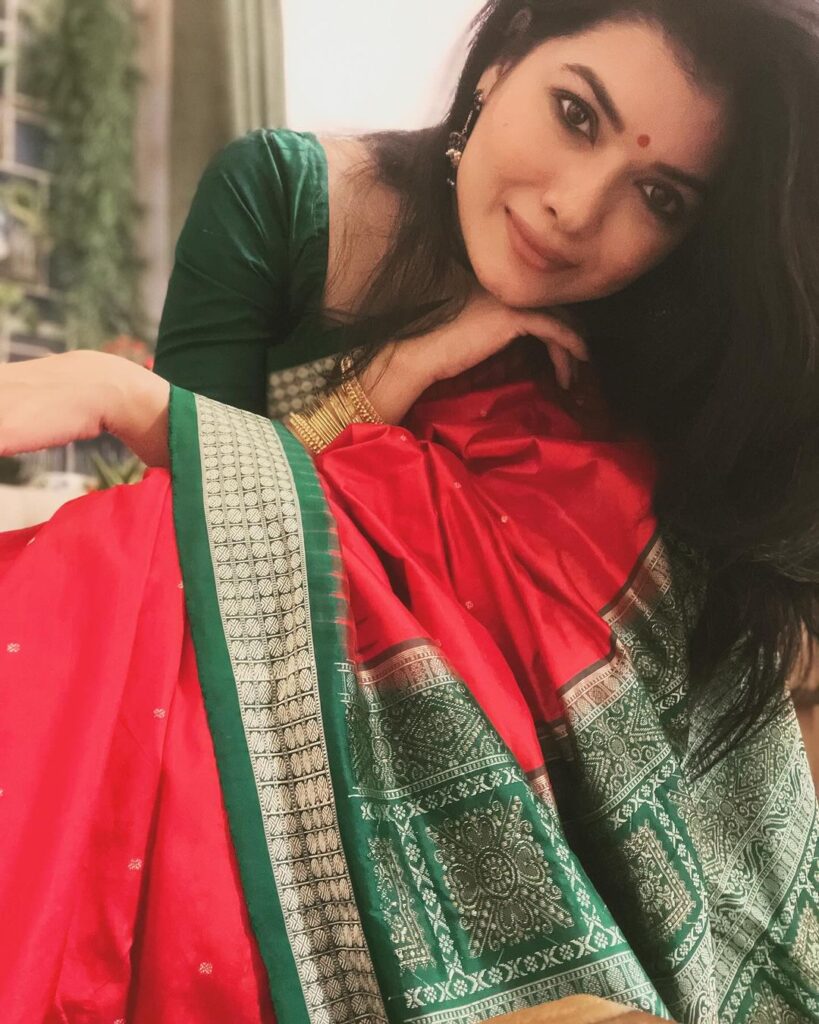
Sauraseni shows how create the perfect high-voltage festive evening look in her off-white Dhakai. A beloved symbol of Bengal’s rich culture and tradition, the Dhakai saree is also known as Jamdani Dhakai. As the name suggests, it originated from Dhaka (now the capital of Bangladesh) long ago in undivided India and assumed considerable popularity under the British. This traditional attire created from the finest muslin is gossamer-like to touch with an intricate pattern of thread weave all through using a discontinuous weft. The craftsmanship of authentic Jamdanis rested in the safe hands of master weavers of yore who had an entire brood of apprentices under them. Superior craftsmanship and rich cultural heritage are what you carry when you adorn yourself in a Dhakai.
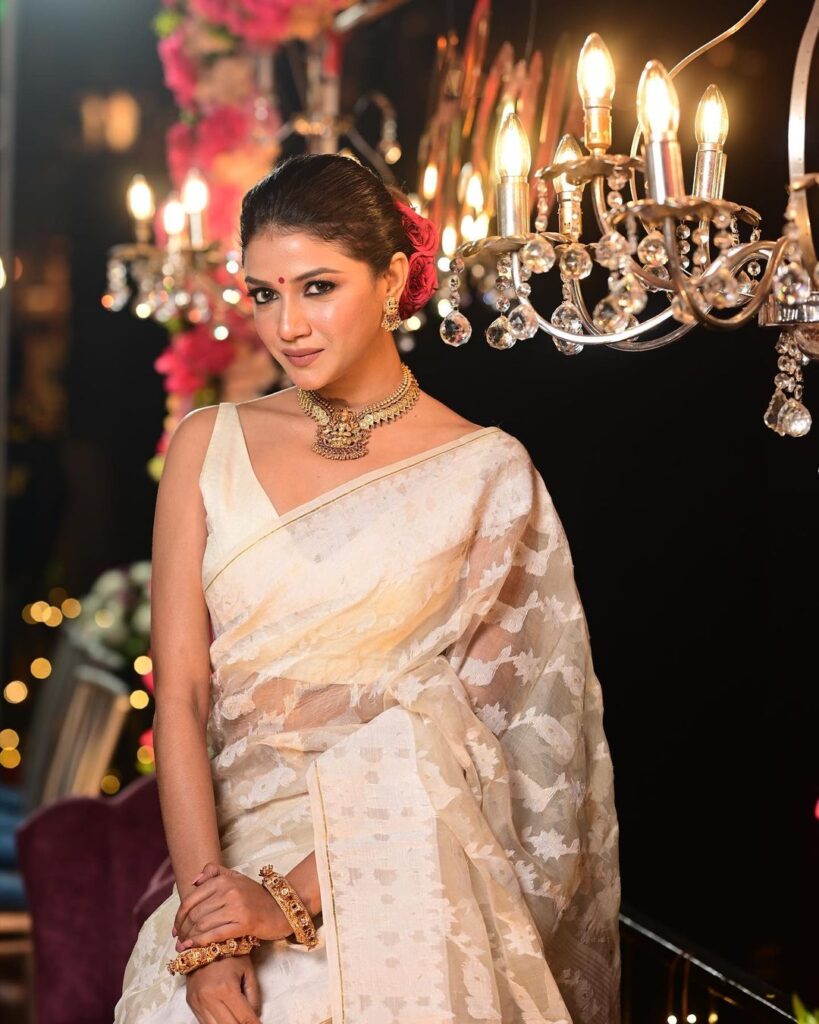
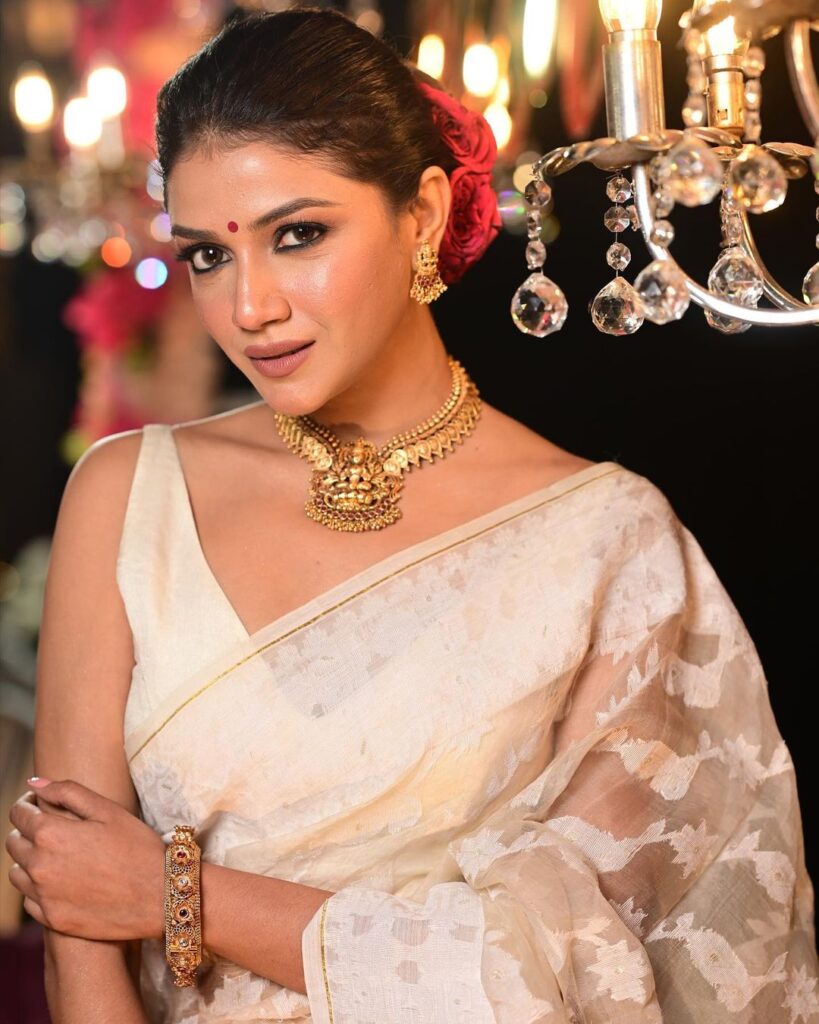
Chikankari Saree – Roshni Bhattacharya’s effortless elegance in a lime-green Chikankari saree is perfect for a lunch date over the festive season. A pair of drop earrings set in stone and pearl in a pretty floral design add a touch of understated glamour to her look. Adding levels of class and refinement to any garment, Chikankari is said to have been introduced in India during the Mughal era in the 16th century. This technique of hand-embroidery using silk and cotton threads is believed to have been brought to Lucknow by Nur Jehan, the wife of Mughal Emperor Jahangir. As an art form flourished under the patronage of the Mughal rulers and their noble families. Today, the city of Lucknow is the epic-centre of Chikankari and has even claimed a special category, Lucknowi Chikankari, for itself.
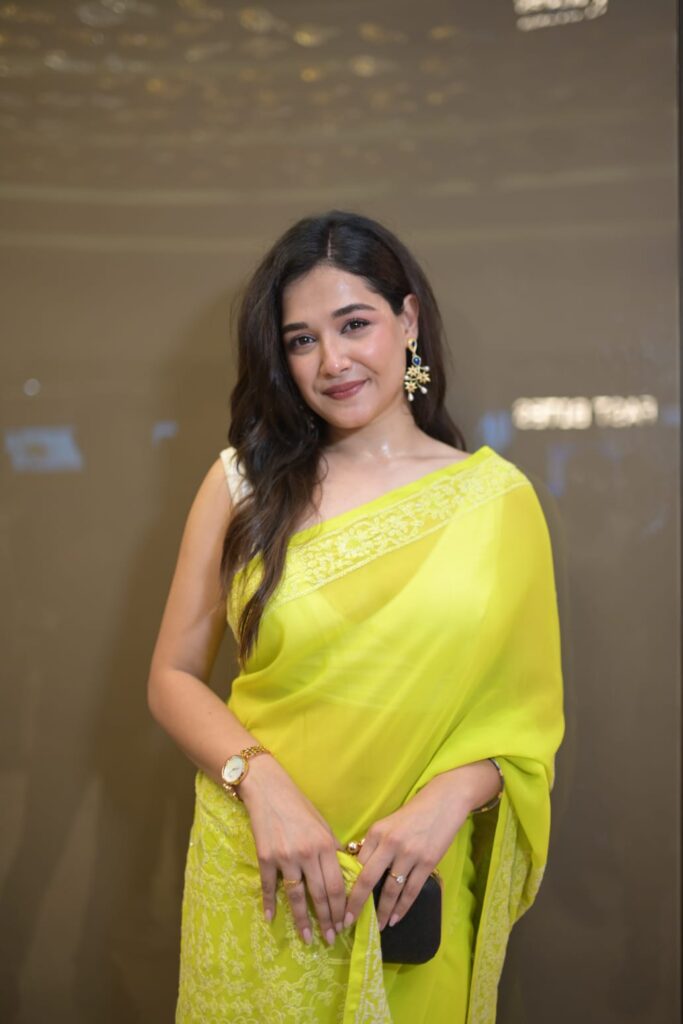
Leheriya Saree – Take cue from Somu Sarkar to style yourself for the festive afternoon in a vibrant and colourful orange Leheriya saree with simple gold gotta-patti border. It so reminds us of the expressive ladies of the desert.Leheriya, the famous Indian textile craft, belongs to the state of Rajasthan and is inspired by sand dunes and constantly-changing desert landscape. The diagonally-rippled lines on a darker base are created by a traditional resist-dye technique in which the whole fabric is tied expertly in a diagonal manner from an end to the other and then immersed in dye. While creating a Mothra Leheriya, the fabric is retied once more, this time from the opposite end. When the thread is unravelled, the beautiful stripes and waves appear with tiny rectangular spaces in-between. “Mothra” comes from moth meaning pulses in the local language.
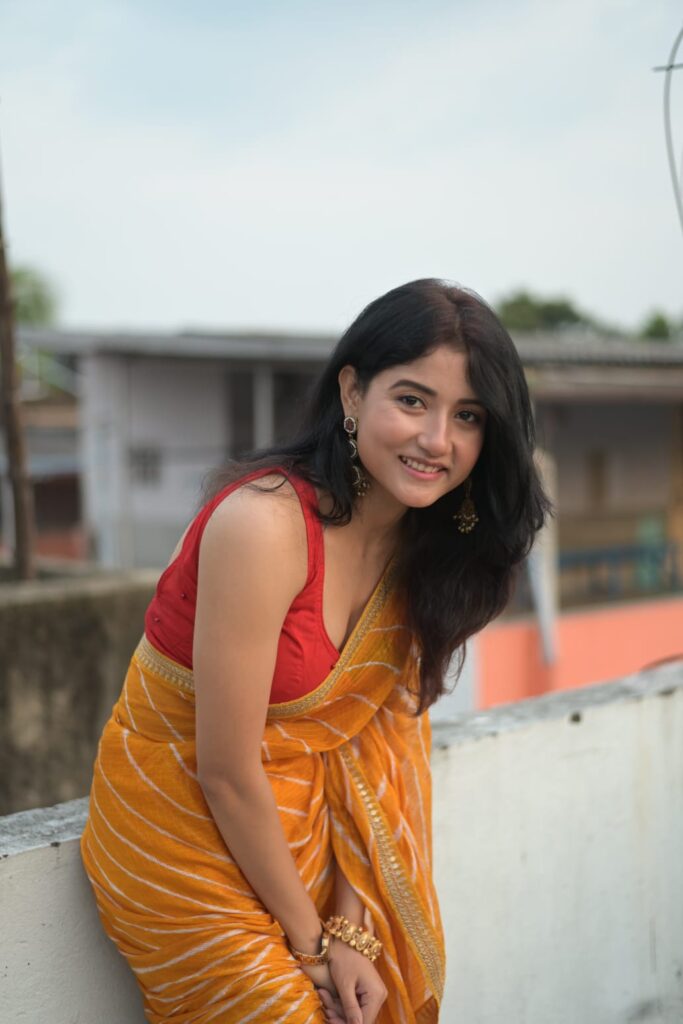
All Images Sourced from Instagram except Roshni Bhattacharya & Somu Sarkar are exclusive.

Leave a Reply